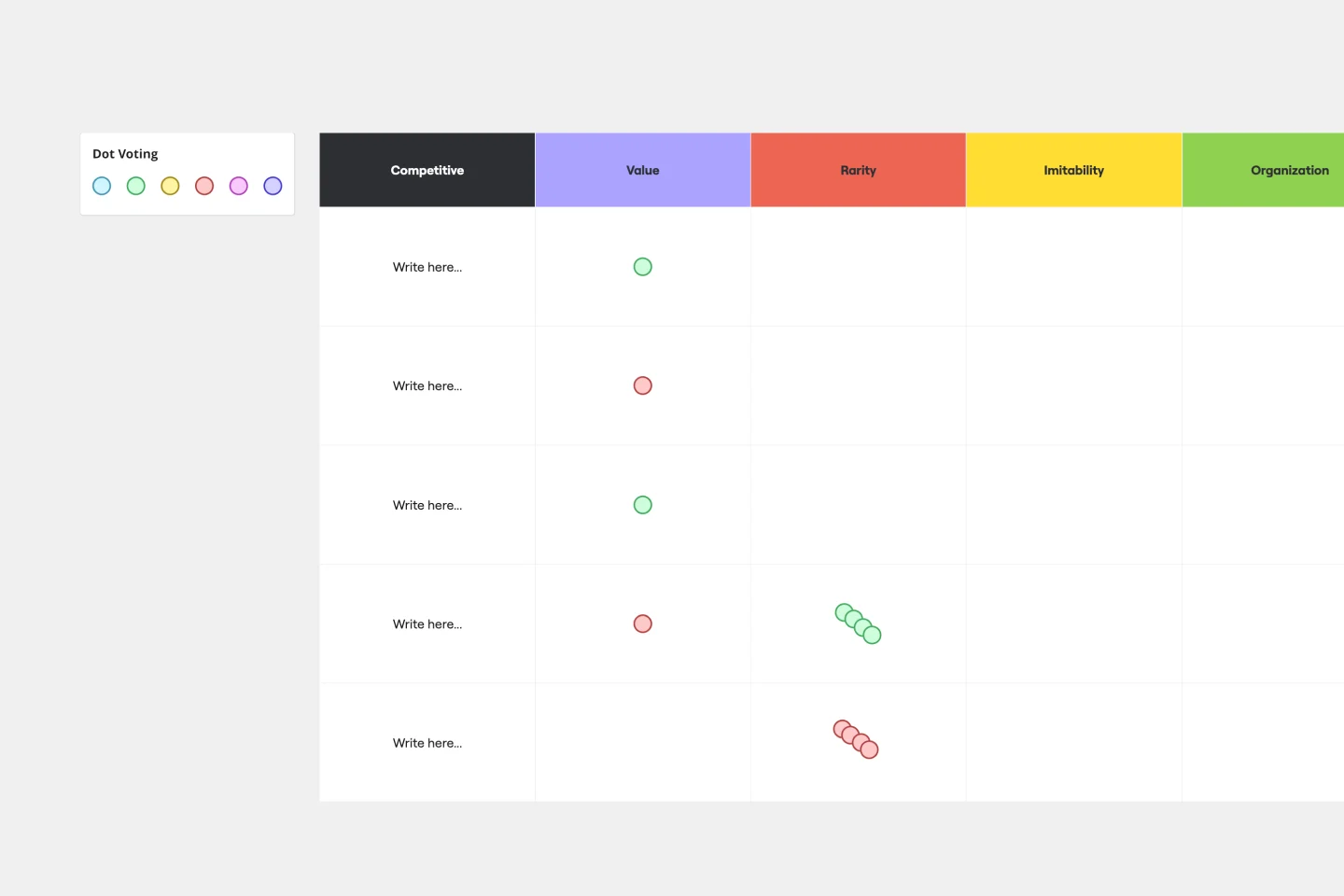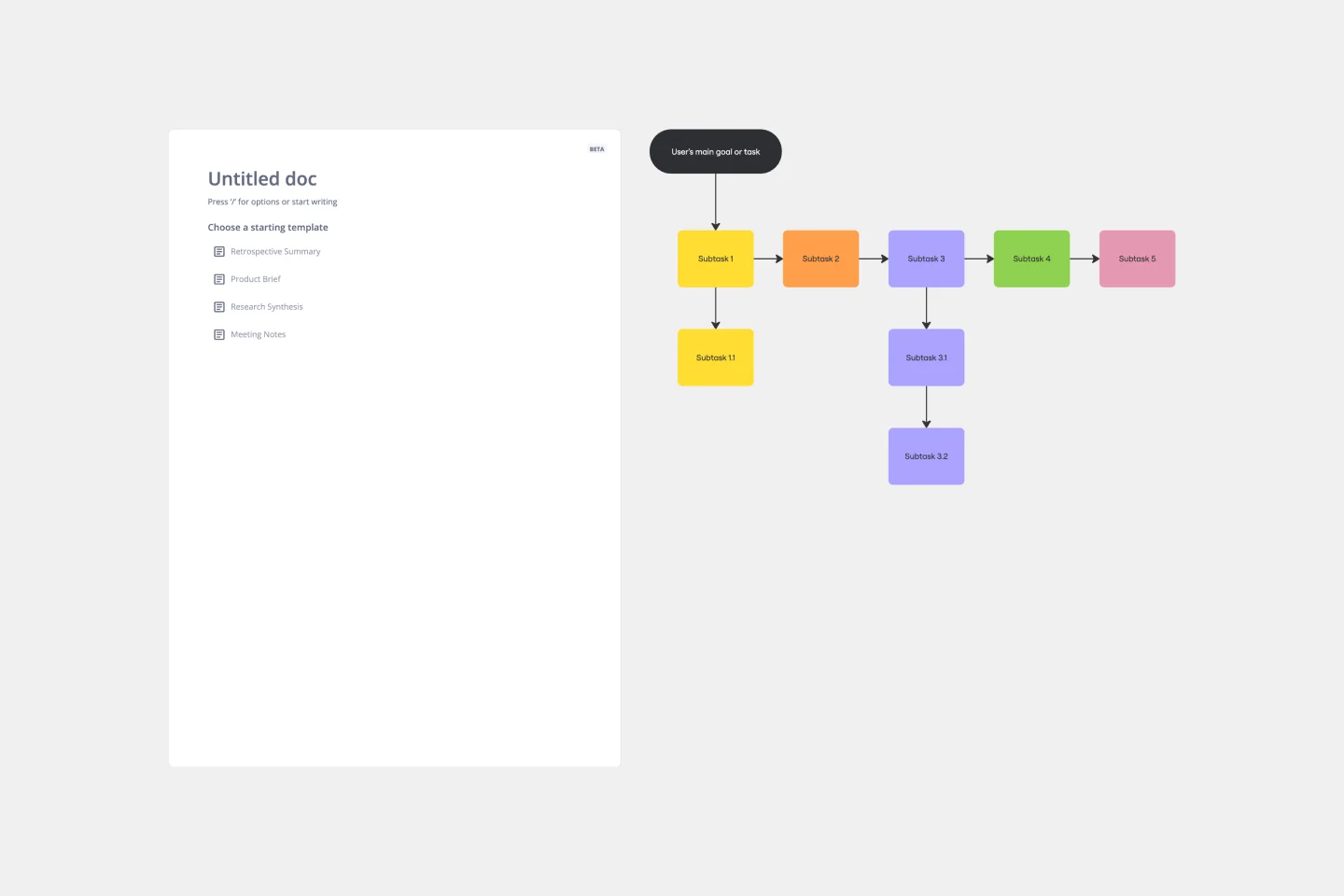About the 4C Analysis Template
The 4C Analysis Template is a powerful framework that allows you to comprehensively analyze your business from four perspectives: Cost, Convenience, Communication, and Customer. This template can help you better understand your organization and make informed decisions based on your analysis. Here are the four sections of the template:
Cost Section
Analyze your business's cost structure, including fixed and variable costs, and identify areas where you can reduce costs.
Explore questions about your pricing strategies, profit margins, and cost-saving opportunities.
Develop effective cost-reduction strategies to improve your business's profitability.
Convenience Section
Analyze your business's convenience factors, such as accessibility, ease of use, and availability, and identify areas where you can improve.
Explore questions about your delivery methods, customer service processes, and online presence.
Develop effective convenience strategies to enhance your customer's experience and satisfaction.
Communication Section
Analyze your business's communication strategies, including your marketing and advertising efforts, and identify areas where you can improve.
Explore questions about your target audience, branding, and messaging.
Develop effective communication strategies to reach your target audience and improve your brand image.
Customer Section
Analyze your business's customer base, including their needs, preferences, and behaviors, and identify areas where you can improve.
Explore questions about your target market, customer demographics, and customer feedback.
Develop effective customer strategies to enhance your customer's experience and loyalty.
How to use the template in Miro
Here are the steps to use the 4C Analysis Template in Miro:
Customize the template by double-clicking shapes, editing the content, and customizing the design to fit your needs.
Invite everyone to join you on the board by sharing the board link.
Add any additional artifacts to your board to provide more context.
Why should you use the 4C Analysis Template?
There are several benefits to using the 4C Analysis Template for your business:
Integrated approach: Facilitate a holistic view, enabling businesses to address multiple facets simultaneously.
Adaptability: Customizable marketing approaches based on specific audience needs and market conditions.
Competitive advantage: Identify unique value propositions, establishing a stronger competitive position.
Market responsiveness: Allows for quick responses to shifts in the market, ensuring continued relevance.
Enhanced customer experience: Positive experiences lead to customer satisfaction, positive word-of-mouth, and increased brand loyalty.
4C Analysis Template FAQs
How does the 4C Analysis Template benefit businesses?
The template helps businesses gain a comprehensive understanding of their organization and make informed decisions based on their analysis. It also helps identify areas for growth and develop more effective strategies.
Is the 4C Analysis Template accessible to businesses of all sizes and industries?
Yes, the 4C Analysis Template is accessible to businesses of all sizes and industries. It can be customized to fit any organization's specific needs and help them better understand their business.

Miro
Your virtual workspace for innovation
Miro is an innovation workspace designed for teams of every size, everywhere, to dream, design, and build the future together. Our mission? To empower these teams to create the next big thing, powered by AI at every step of the way. Over 90 million users around the world rely on Miro to untangle complex ideas, put customer needs first, and deliver products and services faster. All supported by best-in-class security, compliance, and scalability.
Categories
Similar templates
3C Analysis Template

3C Analysis Template
The 3C Analysis Template is a powerful tool that can help you analyze your business environment, identify opportunities for growth, and guide your business strategy. By using the template, you can collaborate with your team in real time, customize the template to fit your needs, and save time, making it an essential tool for any business looking to stay ahead of the competition.
Force Field Analysis Template

Force Field Analysis Template
A Force Field Analysis Template is a powerful tool that helps teams identify and analyze the forces supporting or hindering progress toward a specific change or goal. This template provides a visual space where you can brainstorm and plot out 'driving forces' that push objectives forward and 'restraining forces' that prevent advancement, all on a single, intuitive board. One of the primary benefits of utilizing the Force Field Analysis template is that it fosters a shared understanding among team members. By visually mapping out and discussing each force, teams can prioritize efforts, build consensus on the central issues to tackle, and collaboratively devise strategic plans to strengthen positive influences while reducing negative ones.
VRIO Analysis Template

VRIO Analysis Template
The VRIO Analysis Template is a framework that helps businesses evaluate their resources and capabilities for competitive advantage. It categorizes resources into four areas: Value, Rarity, Imitability, and Organization. This provides a comprehensive view of an organization's strengths and potential weaknesses. The template has the key benefit of offering quick visual insights. Decision-makers can immediately identify and focus on resources that are valuable, rare, hard to imitate, and well-organized. This ensures a sustainable competitive edge and saves time by avoiding lengthy textual analyses.
Task Analysis Diagram Template

Task Analysis Diagram Template
The Task Analysis Diagram Template is a helpful tool that simplifies complex tasks by breaking them down into smaller, more manageable steps. This strategic approach brings clarity and ensures a systematic method for tackling complex user paths. The template's most significant advantage is its precision, as it maps out every detail of a task to guarantee that nothing is missed. This results in more efficient operations.
3C Analysis Template

3C Analysis Template
The 3C Analysis Template is a powerful tool that can help you analyze your business environment, identify opportunities for growth, and guide your business strategy. By using the template, you can collaborate with your team in real time, customize the template to fit your needs, and save time, making it an essential tool for any business looking to stay ahead of the competition.
Force Field Analysis Template

Force Field Analysis Template
A Force Field Analysis Template is a powerful tool that helps teams identify and analyze the forces supporting or hindering progress toward a specific change or goal. This template provides a visual space where you can brainstorm and plot out 'driving forces' that push objectives forward and 'restraining forces' that prevent advancement, all on a single, intuitive board. One of the primary benefits of utilizing the Force Field Analysis template is that it fosters a shared understanding among team members. By visually mapping out and discussing each force, teams can prioritize efforts, build consensus on the central issues to tackle, and collaboratively devise strategic plans to strengthen positive influences while reducing negative ones.
VRIO Analysis Template

VRIO Analysis Template
The VRIO Analysis Template is a framework that helps businesses evaluate their resources and capabilities for competitive advantage. It categorizes resources into four areas: Value, Rarity, Imitability, and Organization. This provides a comprehensive view of an organization's strengths and potential weaknesses. The template has the key benefit of offering quick visual insights. Decision-makers can immediately identify and focus on resources that are valuable, rare, hard to imitate, and well-organized. This ensures a sustainable competitive edge and saves time by avoiding lengthy textual analyses.
Task Analysis Diagram Template

Task Analysis Diagram Template
The Task Analysis Diagram Template is a helpful tool that simplifies complex tasks by breaking them down into smaller, more manageable steps. This strategic approach brings clarity and ensures a systematic method for tackling complex user paths. The template's most significant advantage is its precision, as it maps out every detail of a task to guarantee that nothing is missed. This results in more efficient operations.